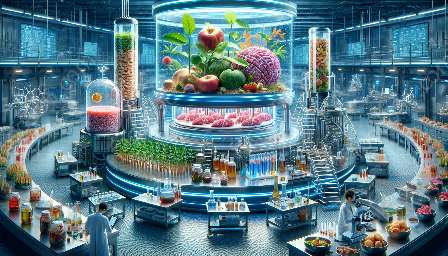Biodegradable materials have gained immense popularity in recent years due to their environmentally friendly nature. One such class of materials that is garnering attention is biodegradable protein-based materials. This article will delve into the significance of these materials, their application in biodegradable packaging for food, and their connection to the field of food biotechnology.
The Rise of Biodegradable Protein-Based Materials
As the world becomes increasingly aware of the environmental impact of conventional plastics, there is a growing interest in developing sustainable alternatives. Biodegradable protein-based materials have emerged as a promising solution due to their biocompatibility, renewability, and ability to degrade naturally.
Understanding Biodegradable Protein-Based Materials
Biodegradable protein-based materials are derived from natural sources such as soy, wheat, and corn. These materials utilize proteins as the primary building blocks, offering a renewable and biodegradable alternative to traditional petroleum-based plastics. The use of proteins in these materials not only reduces the reliance on non-renewable resources but also minimizes the waste generated during their production and disposal.
The Role of Biodegradable Protein-Based Materials in Food Packaging
One of the key applications of biodegradable protein-based materials lies in the realm of food packaging. With the increasing demand for sustainable packaging solutions, these materials are being leveraged to create biodegradable packaging for food products. Their inherent biodegradability ensures that they can be safely composted, thus reducing the burden on landfills and offering a more eco-friendly alternative to conventional packaging materials.
Advantages of Biodegradable Packaging Materials for Food
Biodegradable protein-based packaging materials offer several advantages for the food industry. Not only do they provide an environmentally conscious packaging solution, but they also contribute to prolonging the shelf life of food products. These materials can act as a barrier to moisture and oxygen, thereby preserving the freshness of the packaged food. Furthermore, they can be designed to be transparent, allowing consumers to inspect the quality of the food without compromising on sustainability.
Food Biotechnology and Biodegradable Protein-Based Materials
The intersection of food biotechnology and biodegradable protein-based materials presents a wealth of opportunities for innovation. Food biotechnology focuses on utilizing biological processes to improve the production, preservation, and safety of food. By integrating biodegradable protein-based materials into this field, researchers and industry professionals can explore novel approaches to food packaging, storage, and transportation.
Enhancing Food Preservation through Biodegradable Materials
Food biotechnology plays a crucial role in enhancing food preservation methods, and the integration of biodegradable protein-based materials aligns with this objective. These materials can be tailored to provide optimal conditions for food storage, thereby reducing food spoilage and waste. Additionally, the biocompatibility of protein-based materials ensures that they do not introduce harmful substances into the packaged food, maintaining its safety and quality.
Future Prospects and Research Initiatives
Looking ahead, ongoing research in the realm of biodegradable protein-based materials is poised to drive significant advancements in biodegradable packaging for food. The development of innovative processing techniques, the exploration of new protein sources, and the enhancement of material properties are key areas of focus. Furthermore, collaborations between food biotechnologists and material scientists can pave the way for interdisciplinary breakthroughs, ultimately leading to the commercialization of sustainable packaging solutions.
Conclusion
Biodegradable protein-based materials represent a sustainable and versatile option for addressing the challenges associated with traditional packaging materials. Their integration into the realm of food biotechnology holds immense promise for fostering sustainable practices within the food industry. By embracing these materials, stakeholders can contribute to the development of a circular economy and mitigate the environmental impact of food packaging.

